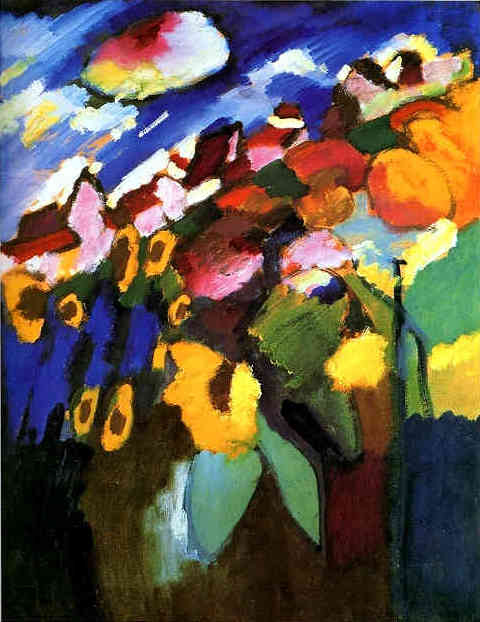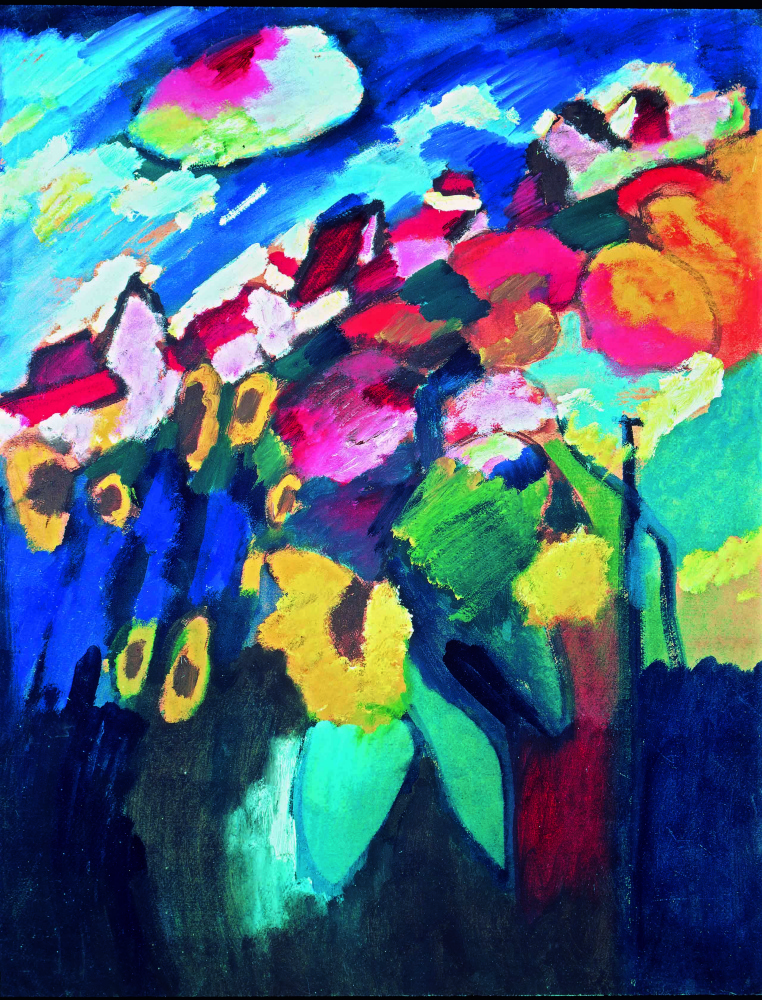log in
Enter site
Login to use Arthive functionality to the maximum
Garden in Murnau II
Wassily Kandinsky • Painting, 1910, 67×51 cm
Description of the artwork «Garden in Murnau II»
At the end of 1904, Kandinsky, together with Gabrielle Munteris sent to a multi-year journey (mostly for European countries), which influenced his future work and determined the direction of later artistic experiments of the artist. During your journey Kandinsky several months he lived in Paris (the city itself he is not very liked, but they stayed there at the insistence Munter), where he became acquainted with the work Cezanneand the fauves. Their bright and energetic paintings has had a significant impact on the palette and colour saturation of the works that the artist began to create after his return to Germany.
In the summer of 1909 Kandinsky and Munter go to a small town of Murnau in the foothills of the Bavarian Alps. This trip is considered a kind of starting point in the development of Kandinsky abstract artist.
Picture "The garden in Murnau" Kandinsky was written just at this period. In the city they are from Gabriel came at the invitation of longtime friends and colleagues of the artist – Alexei Jawlenskyand Marianne Verevkin. Most of the time they spent together, often working EN plein air, so during this period, Kandinsky mostly paints landscapes (1, 2, 3, 4). But these landscapes quite unlike the early work of the artist, they still felt the influence of the Impressionists, but noticeable mood, which will feature his "impressions", "improvisations" and "compositions".
Of these new landscapes painted in Murnau, gradually leaves the volume, changing the perspective. Kandinsky begins to use a more vibrant, dense color, but roll them very thin, sometimes almost transparent layer. "The garden in Murnau" along with other works of this period clearly demonstrates the gradual movement of Kandinsky towards the abstract. Here still quite distinguishable objects, but their outlines are already maximally blurred, and the borders are often very arbitrary. Their landscapes painted in Murnau, Kandinsky was later to say: "I had no interest in trees or the house itself. Blending into the canvas of colored lines and spots, I wanted to make objects sing with the power that was known to me alone."
Author: Eugene Sidelnikov
In the summer of 1909 Kandinsky and Munter go to a small town of Murnau in the foothills of the Bavarian Alps. This trip is considered a kind of starting point in the development of Kandinsky abstract artist.
Picture "The garden in Murnau" Kandinsky was written just at this period. In the city they are from Gabriel came at the invitation of longtime friends and colleagues of the artist – Alexei Jawlenskyand Marianne Verevkin. Most of the time they spent together, often working EN plein air, so during this period, Kandinsky mostly paints landscapes (1, 2, 3, 4). But these landscapes quite unlike the early work of the artist, they still felt the influence of the Impressionists, but noticeable mood, which will feature his "impressions", "improvisations" and "compositions".
Of these new landscapes painted in Murnau, gradually leaves the volume, changing the perspective. Kandinsky begins to use a more vibrant, dense color, but roll them very thin, sometimes almost transparent layer. "The garden in Murnau" along with other works of this period clearly demonstrates the gradual movement of Kandinsky towards the abstract. Here still quite distinguishable objects, but their outlines are already maximally blurred, and the borders are often very arbitrary. Their landscapes painted in Murnau, Kandinsky was later to say: "I had no interest in trees or the house itself. Blending into the canvas of colored lines and spots, I wanted to make objects sing with the power that was known to me alone."
Author: Eugene Sidelnikov




